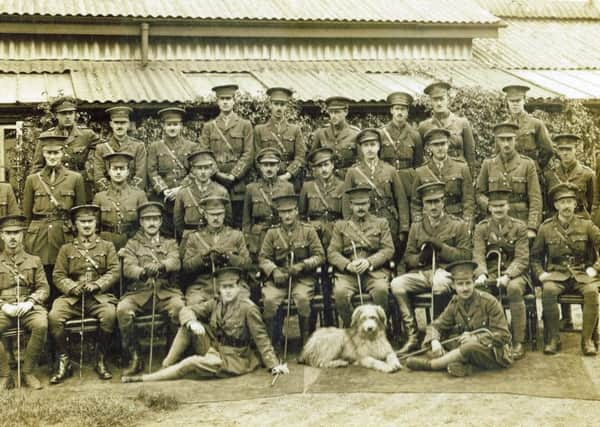Looking Back: ‘They died where they stood without flinching’


Few in these parts do not know the story of the Lancashire Fusiliers, who a century ago stormed ashore through murderous machine gun fire to famously win “six VCs before breakfast” at the start of the disastrous Gallipoli campaign in the First World War.
Two full Army divisions drawn from the old County Palatine served on the Peninsula, numbering at least 25,000 Lancastrian soldiers at any one time.
Advertisement
Hide AdAdvertisement
Hide AdRunning down the spine of Gallipoli is a range of high ground, at the centre of which lies a hill called Chunuk Bair. He who holds Chunuk Bair commands the battlefield. Nevertheless, on August 8 1915 a force of mainly New Zealand soldiers, with some British, gained the summit after fierce fighting.
Worn out and exhausted, they were relieved late on the 9th by the 6th Battalion, Loyal North Lancashire Regiment, later joined by the 5th Wiltshires. Desperately, men who less than a year earlier were working in civilian occupations, immediately set to work trying to improve the hilltop defences. They were not given time to do so.
The official dispatch takes up the story: “At daybreak on Tuesday, August 10 1915, the Turks delivered a grand attack... against these two battalions, already weakened in numbers, though not in spirit, by previous fighting.
“First our men were shelled by every enemy gun and then, at 5.30 am, were assaulted by a huge column, consisting of no less than a full division, plus a regiment of three battalions.
Advertisement
Hide AdAdvertisement
Hide Ad“The North Lancashire men were simply overwhelmed in their shallow trenches by sheer weight of numbers, whilst the Wiltshires, who were caught in the open, were literally almost annihilated. The ponderous mass of the enemy swept over the crest, turned the right flank of our line below, (and) swarmed round ... General Baldwin’s column, which had to give ground and were only extricated with great difficulty and very heavy losses.”
Baldwin’s column, ordered to support the men on the summit, was largely made of yet more men from Lancashire, drawn from the 6th Battalions of the East Lancashire and South Lancashire Regiments.
Afterwards General Sir Ian Hamilton, the Commanding General at Gallipoli, wrote: “Generals fought in the ranks and men dropped their scientific weapons and caught one another by the throat. So desperate a fight cannot be described. The Turks came on again and again, fighting magnificently, calling upon the name of God. Our men stood to it and maintained, by many a deed of daring, the old traditions of their race. There was no flinching. They died in the ranks where they stood.”
It was a searing baptism of fire for the Lancashire soldiers. Effectively, the 6th Battalions of the East, South, and Loyal North Lancashire Regiments were overwhelmed and almost wiped out, losing in all 41 officers and around 1,500 men. The 6th East Lancashires were reduced to barely 100 men.